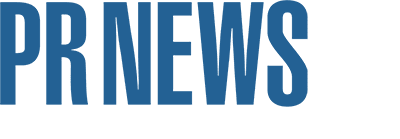
Media relations for retail and consumer packaged goods (CPG) is different from any other vertical. It has its own speed, culture and rhythm. Becoming successful in this PR world can feel a bit like switching from Spanish to the Catalan dialect—familiar, but full of nuance and valuable lessons.
News cycles can be chased, but news can (and should) also be created.
The best thing about PR in the retail/CPG space is that communicators can do anything, including creating unique content and storylines.
Rather than just following trends or waiting for “relevant” news to come about, my team took an offensive approach. We met with dozens of reporters to ask them what they wanted to cover, what data they were lacking, what storylines they were looking for, and how we could be most helpful to them. We translated those conversations back to our clients, who were then able to commission proprietary surveys and analyze internal data for unexpected consumer behavior patterns to produce insights for us to package up and deliver in a media-friendly way. By consistently delivering original, relevant insights, we made it so our clients weren’t just commenting on trends, they were setting the agenda.
For example, ahead of Halloween, instead of simply pitching commentary on expected candy sales, we worked with a client to survey thousands of consumers on unexpected behavioral shifts, such as how rising prices were influencing trick-or-treating habits, and how Gen Z was reshaping Halloween celebrations with social media-driven trends. That exclusive data became the hook that secured top-tier media interest in publications such as Bloomberg and Yahoo Finance.
If you’re on time, you’re late. If you’re two months early, you’re on time.
While most industries’ news cycles revolve around the fiscal year, retail and CPG brands are driven by holidays and key events. Looking back at previous years’ coverage, we noticed that reporting on holidays and seasonal events started happening well ahead of the date, sometimes even as far as two to three months in advance. If coverage aired that far out, we had to work backward to formulate the pitching materials in advance, ensuring reporters would see it in their inbox at just the right time.
Beginning three to four months before a particular event or holiday, we monitored the media landscape and drew inspiration from previous years’ coverage to formulate survey questions, as described in the Halloween example above. Taking this extra step gave the PR team a leg up, allowing us to shape the narrative we brought to the media and angle it to our advantage.
A retail PR professional’s media strategy should be as nonlinear as the elevator from "Charlie and the Chocolate Factory."
Traditional B2B PR often follows a straightforward formula: The client has an announcement and wants the media to cover it. And this works for many industries looking for coverage in trade publications that target niche audiences. However, media relations in the retail and CPG space is not as linear. There are always multiple components, industries and angles to consider. Retail touches everything, from consumer behavior to the economy to sports and more. A PR professional must consider the storylines and reporters operating in each of these tangential verticals and incorporate components targeted toward each of them into their strategy.
Take this example: In the summer of 2024, the “swicy” food trend swept the nation. Data identified Gen Z as a major driver of sales, and as interest in the sweet and spicy flavor profile grew, an increasing number of brands began developing and releasing their own swicy products.
Even though swicy was a retail and food-related story, the story touched more than just supermarket shelves—it also highlighted economic resilience, consumer behavior, demographic influence and trends. Our team built a media strategy around these intersecting factors, tailoring an approach to resonate with reporters across various beats. Therefore, news coverage on the trend could be found in trade and top-tier publications alike, from The Food Institute to CNN. By adapting to the broader cultural and economic implications of the trend, we ensured the story extended beyond the grocery aisle and into the mainstream conversation.
Learn how to make a square peg fit into a round hole.
The beauty of B2B media relations in the retail/CPG space lies in the topic's wide-reaching nature. The heart of retail is consumer behavior, and consumer behavior serves as the foundation of American business and the economy.
So, when asked how our team acquired a monthly Bloomberg Radio spot talking about consumer retail sales for a client's senior leadership executive, we answer easily: It’s because she was able to parlay any question—whether about fashion, out-of-home expenditures, or even cars—into an answer underscored by knowledge of the CPG industry that her organization operates in. Using the trends and the data available to her, she could parlay a statistic about consumers buying in bulk into a point underscoring the ongoing conversations surrounding inflation and its effects on broader consumer behavior. And that’s just one example.
Know how to flex.
To be a successful PR pro in the retail and CPG space, you must understand the industry and the news cycle in every vertical and industry that retail influences or touches. You have to be able to pivot as new trends emerge and decline. You must think five steps ahead to avoid falling one step behind.
Remi Yuter is Senior Communications Specialist at Hot Paper Lantern
